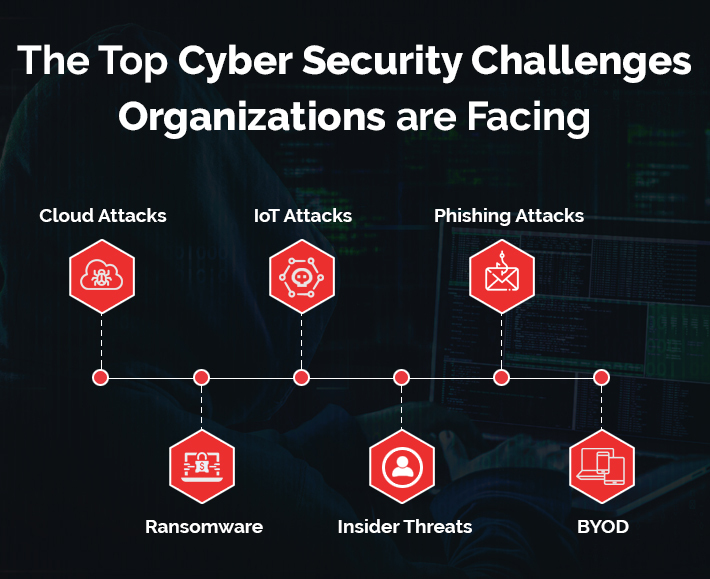Last Updated on December 24, 2024 by Satyendra

The cybersecurity industry is an alphabet soup of security acronyms and categories, with vendors and CISOs scrambling to chase the latest security trends, but it’s clear that this approach is not working. The frequency of data breaches is growing, with the consequences being devastating for both companies and consumers. The solution lies in prioritizing data protection and moving away from perimeter defenses, but the CISO role has become increasingly challenging, with overwhelming workloads, lack of resources, and a sense of desperation when it comes to cybersecurity vendors and technologies.
Why Cybersecurity is a Must for Organizations
Organizations have an obligation to protect their most valuable assets, which might include personal data, financial information, and intellectual property. A robust cybersecurity strategy is essential to prevent financial losses, maintain a positive reputation, and ensure compliance with regulatory requirements. Cybersecurity protects business operations, prevents ransomware attacks and insider threats. Additionally, a strong cybersecurity posture will help to build trust with customers and demonstrates an organization’s commitment to protecting their personal data. By implementing robust cybersecurity measures, organizations can minimize the risk of financial losses, protect their reputation, and avoid regulatory fines.
The Top Cyber Security Challenges Organizations are Facing
Below is a compilation of the most notable cybersecurity challenges that organizations are currently facing, along with their respective solutions:

1. Cloud Attacks
Cloud computing has become increasingly popular for data storage and sharing, but this trend comes with a significant risk. Cloud attacks are becoming more common, where attackers exploit publicly exposed storage containers or use ransomware to encrypt and demand payment for data decryption. Other notable cloud security Challenges include: Denial-of-Service (DoS) Attacks, security misconfiguration, insecure APIs, and cloud crypto-mining.
To safeguard against cloud attacks, start by choosing reputable cloud service providers that have a robust track record of security measures, including encryption, data redundancy, and compliance with industry standards. Ensure strong passwords and implement multi-factor authentication to add an extra layer of security. Regularly backup critical data and test backups to ensure effectiveness. Additionally, monitor cloud accounts for suspicious activity, set up alerts, and have a clear plan in place for responding to potential security incidents.
2. Ransomware
Ransomware is a malicious software that can cause devastating damage to data and devices. These types of attacks often involve demanding payment for unlocking devices or data, and victims may not receive access to their data even after paying the ransom. The consequences of a ransomware attack can be severe, with lost data, disrupted operations, and financial losses.
To prevent ransomware attacks, it is essential that employees are trained to be vigilant. They must know to avoid clicking on suspicious links, undisclosed attachments, or using unknown USB sticks. They should never open attachments from unknown sources or use unknown software. Likewise, employers must keep their programs and operating system up to date, and only download software from trusted sources. Exercise caution when downloading anything to your mobile device, and use a VPN service on public Wi-Fi networks. Another lesser known approach to minimizing the damage caused by ransomware attacks is called “threshold alerting”, which is where a custom script is triggered when a certain condition is met, such as when X number of files are encrypted or renamed in a given timeframe.
3. IoT Attacks
IoT devices are increasingly vulnerable to attacks due to their lack of robust security measures. This weakness can result in various types of malicious activities, including the installation of malware, unauthorized access to sensitive data, and disruption of business operations. As the IoT landscape continues to grow, it’s essential to acknowledge the potential risks and take proactive measures to prevent these attacks.
To safeguard your IoT devices, adopt best practices such as secure password management, multi-factor authentication, and data encryption. Implement regular IoT inventory audits and conduct various types of security testing, including firmware analysis, threat modeling, and penetration testing. Additionally, educate your workforce on IoT security and ensure that all unused features are disabled to prevent unauthorized access.
4. Insider Threats
An insider threat is a threat that comes from an individual who has legal access to an organization’s computer systems, such as an employee, contractor, or business partner. These individuals may have malicious intentions, such as stealing sensitive data, disrupting operations, or sabotaging the organization’s systems. Insiders may use their knowledge of the organization’s security procedures to evade detection and avoid leaving behind digital footprints. This makes insider threats particularly challenging to detect and mitigate.
Effective insider threat management involves a multi-faceted approach that includes identifying vulnerabilities, developing and enforcing policies and procedures, security awareness training, monitoring and responding to suspicious user activities, and more. This includes performing regular risk assessments to identify sensitive assets and evaluating access controls. Establishing physical security measures, such as screen locks, ID badges and surveillance cameras, can also help prevent unauthorized access to sensitive areas.
5. Phishing Attacks
Phishing attacks are a type of cybercrime where criminals trick victims into revealing sensitive information, such as passwords and credit card numbers, by disguising themselves as legitimate entities. These attacks can take many forms, including emails, videos, and texts, making it crucial to be vigilant when interacting with untrusted entities through electronic communication.
To prevent falling victim to phishing attacks, train employees to be cautious when clicking on links or downloading attachments from unknown sources, and use multi-factor authentication to add an extra layer of security. Regularly update antivirus/anti-malware software and stay informed about the latest trends and techniques used by phishing scammers. Additionally, it’s a good idea to use a password manager to generate and store unique, strong passwords. Refrain from sharing sensitive information, and always enable spam filters to block suspicious emails. Finally, be cautious of unsolicited phone calls or text messages, and regularly review your bank statements to detect any unusual activity.
6. Bring Your Own Device (BYOD)
Bring Your Own Device (BYOD) has become a popular trend in many organizations, allowing employees to use their personal devices for work purposes. However, this trend also poses several security threats to the organization. BYOD devices can introduce unauthorized apps, malware, and viruses into the network, which can compromise the organization’s data and systems. Additionally, unmanaged devices can also pose a risk of data breaches, as employees may store sensitive company information on their personal devices. Additionally, with the increasing use of cloud-based services, the risk of data leaks and unauthorized access to company data becomes even more significant, as employees can easily share sensitive company information with unauthorized parties.
Organizations should implement a comprehensive BYOD policy that outlines the necessary security standards and guidelines for employees to follow. This policy should include requirements for encrypting all company data, using strong passwords, and installing antivirus software on personal devices. Additionally, organizations can implement a Mobile Device Management (MDM) system that allows them to monitor and manage employee devices remotely, ensuring that all devices are up-to-date and compliant with company security policies. Organizations can also educate employees on the importance of data security and the risks associated with BYOD, and provide them with the necessary resources and training to use their devices safely and securely.
How Lepide Helps
The Lepide Data Security Platform is designed to address common cybersecurity Challenges by proactively identifying and defending against threats to sensitive data. Equipped with advanced machine learning capabilities, the platform continuously monitors and analyzes user behavior in real-time, detecting anomalies and providing actionable insights into the root causes of security incidents. With its robust feature set, the platform offers data discovery and classification, privileged access management, and advanced threat analysis capabilities. These features empower organizations to maintain data integrity and compliance, and receive timely notifications to facilitate swift incident response.
If you’d like to see how the Lepide Data Security Platform can help you address common cybersecurity Challenges, schedule a demo with one of our engineers.


 Group Policy Examples and Settings for Effective Administration
Group Policy Examples and Settings for Effective Administration 15 Most Common Types of Cyber Attack and How to Prevent Them
15 Most Common Types of Cyber Attack and How to Prevent Them Why AD Account Keeps Getting Locked Out Frequently and How to Resolve It
Why AD Account Keeps Getting Locked Out Frequently and How to Resolve It
